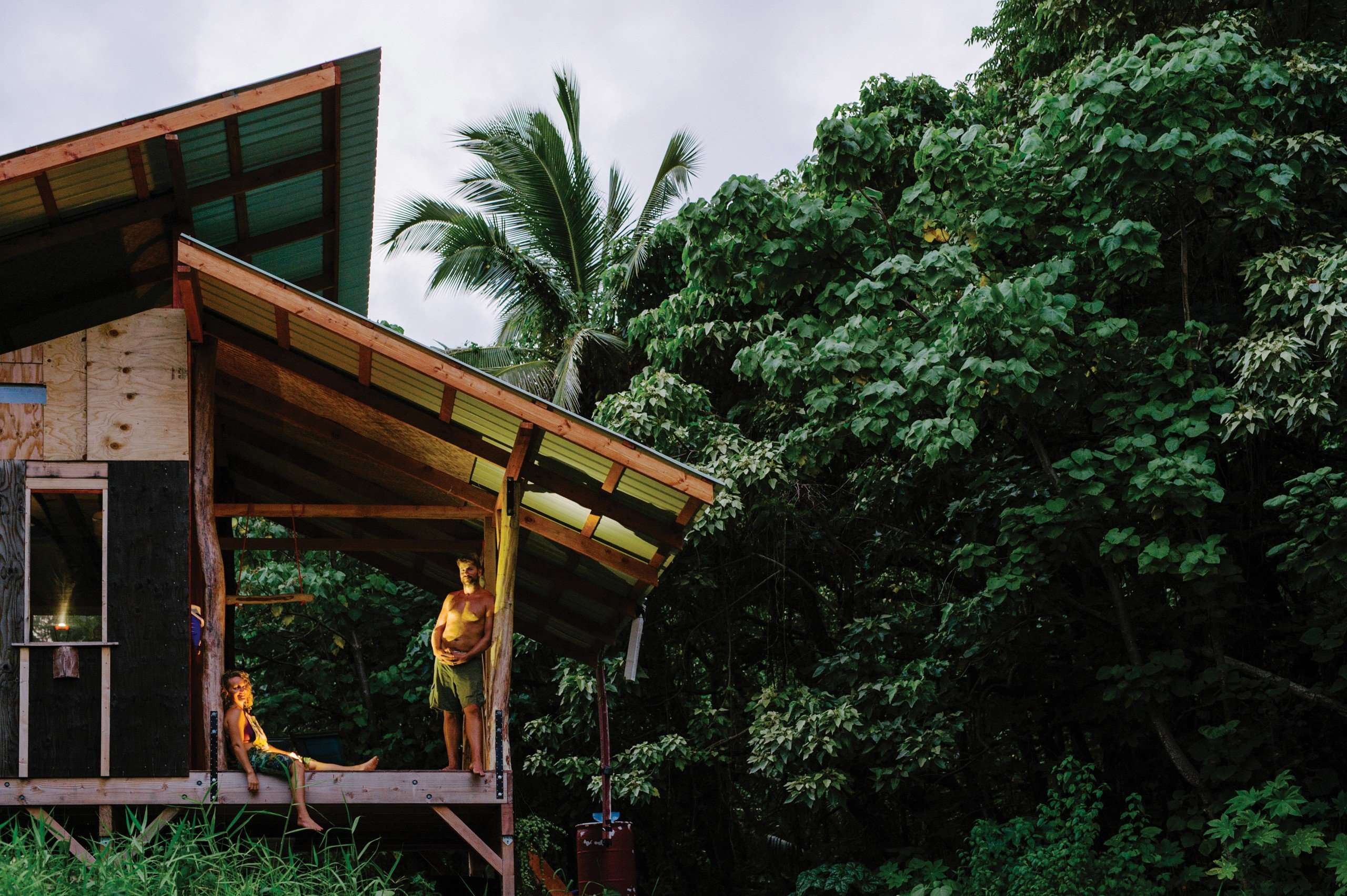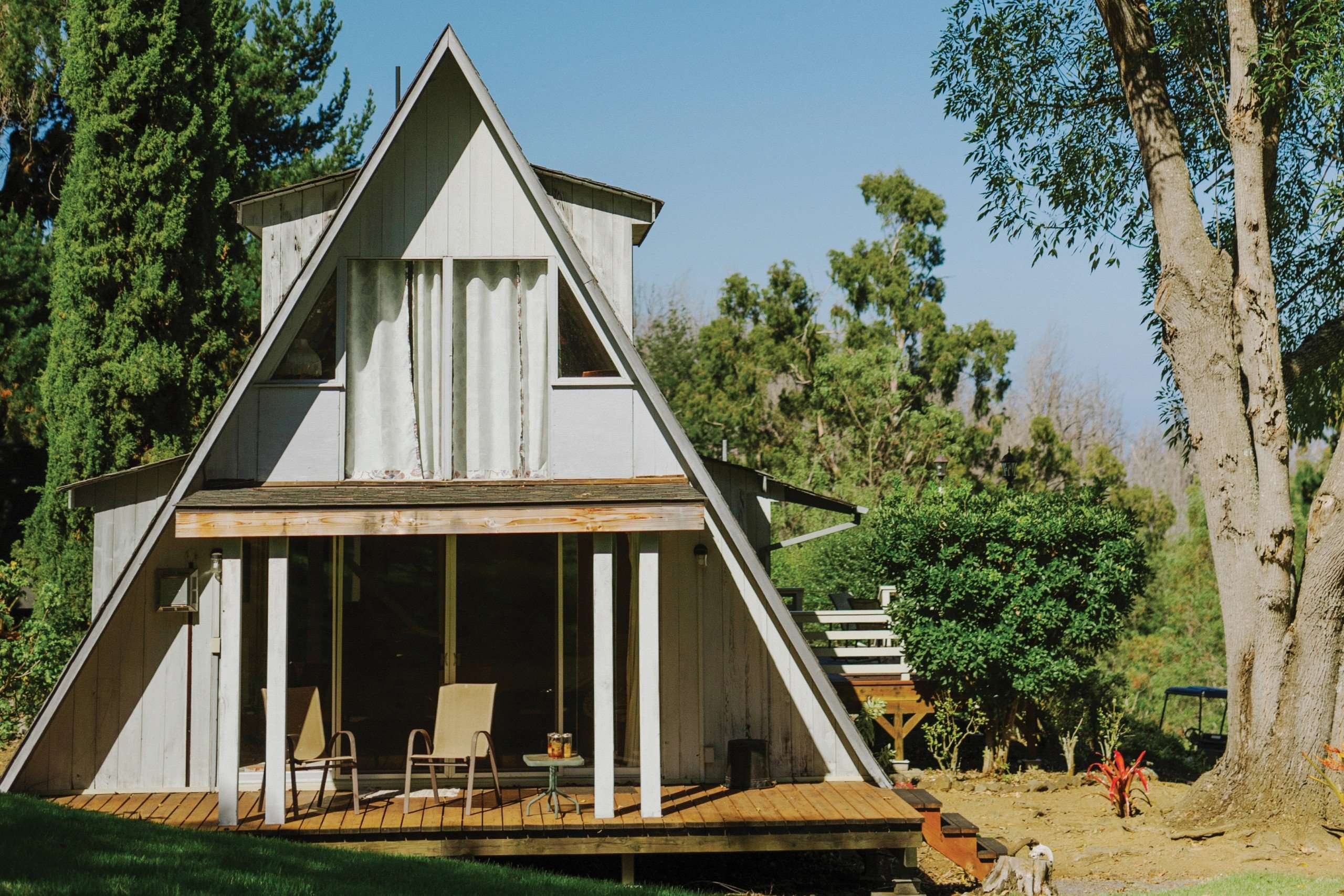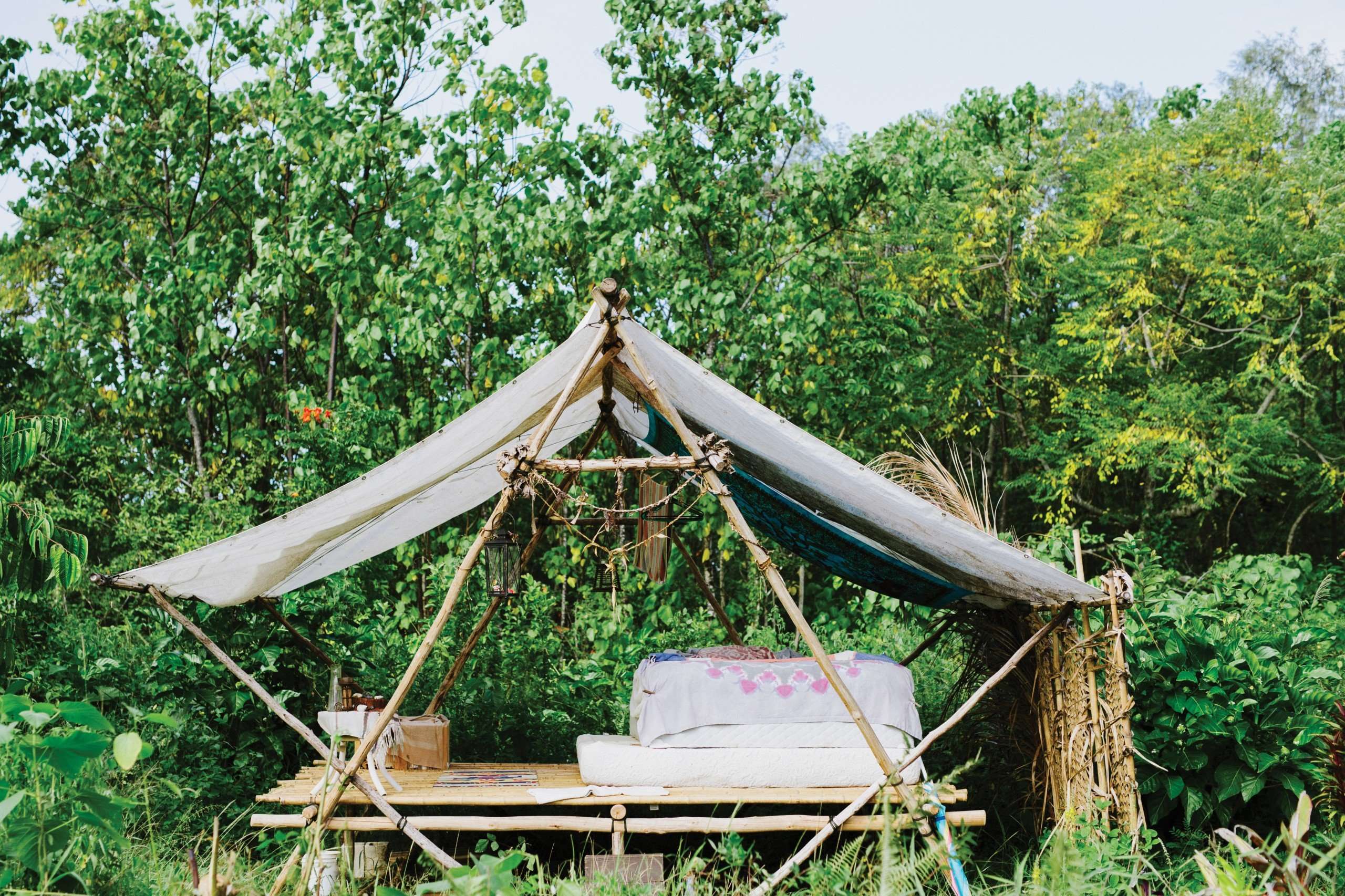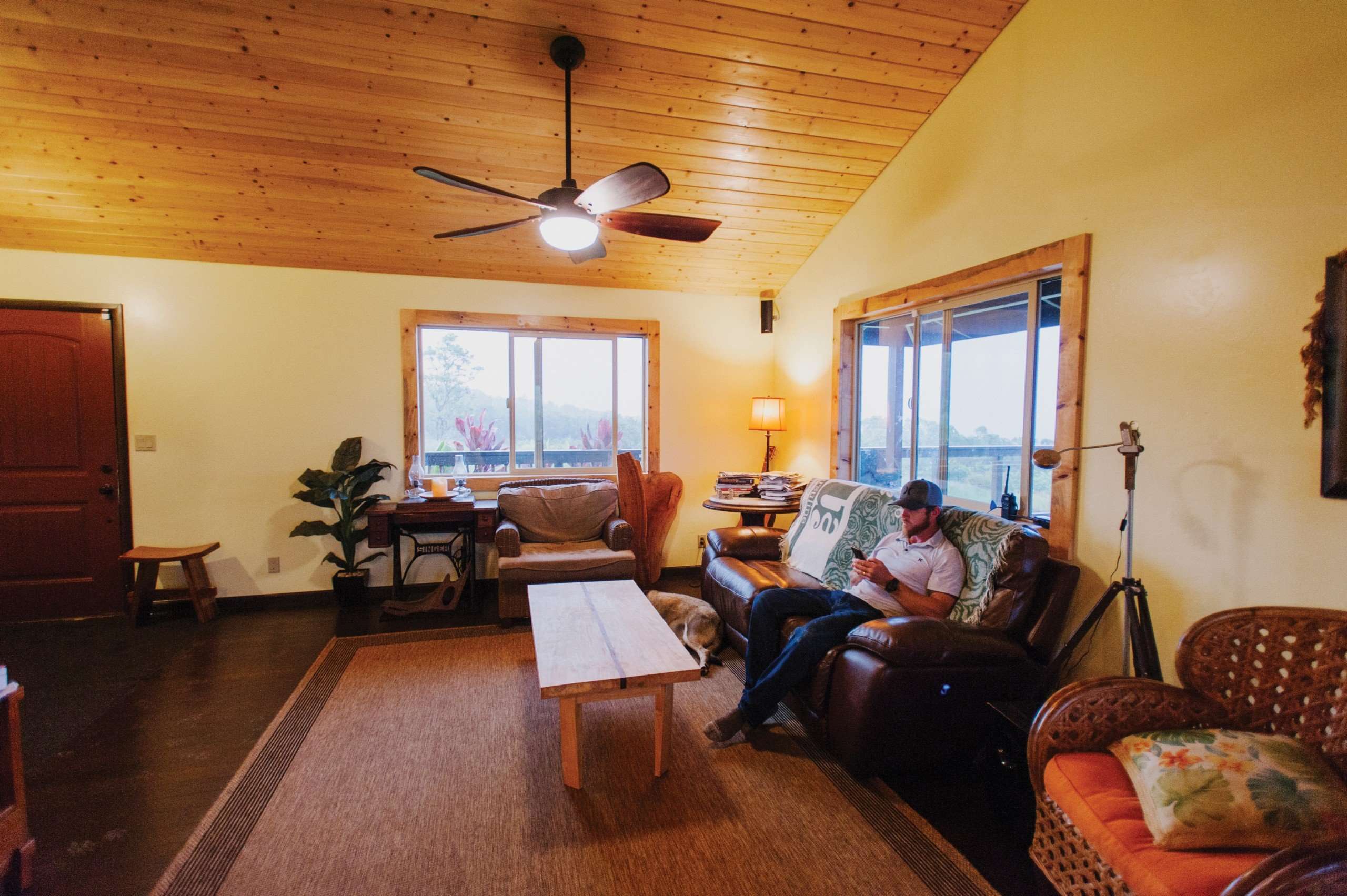Living off-grid in Hawaii may sound like a dream, with its stunning natural beauty and year-round pleasant weather. However, the reality is that Hawaii’s reliance on imports and high cost of living make it far from ideal for those seeking a self-sustainable lifestyle. The cost of housing and property in Hawaii is exorbitantly high compared to the national average, and the need to import construction materials only adds to the expenses. While there are some off-grid communities in Hawaii, they are often a result of necessity rather than choice. With a population density that can skyrocket due to tourism, traffic congestions are common, further impeding the accessibility of off-grid living. Despite these challenges, living off-grid in Hawaii is legally permissible, and the state offers incentives for alternative energy generation. However, careful research and planning are essential to navigate the unique challenges and expenses associated with off-grid living in Hawaii.

Hawaii’s Reliance on Imports
Importation of Construction Materials
One major challenge that Hawaii faces is its heavy reliance on imports, especially when it comes to construction materials. Due to its geographical location, resources such as lumber, steel, and other building materials need to be shipped to the islands. This not only increases the overall cost of construction but also creates a dependence on external suppliers. As a result, the availability of construction materials can be limited, leading to higher prices and potential delays in completing projects.
Limited Food Production
Another significant aspect of Hawaii’s reliance on imports is its limited food production. While the islands boast a tropical climate that supports the growth of a variety of crops, the capacity to produce enough food to sustain the local population is limited. This is partly due to the state’s small land area and the high cost of agricultural land. As a result, Hawaii relies heavily on imported food, which increases the cost of groceries and makes the state vulnerable to disruptions in supply chains.
Decreasing Freshwater Availability
Hawaii is also facing a decreasing availability of freshwater, which adds to its reliance on imports. With limited natural freshwater sources, the state mainly relies on rainfall and underground aquifers for its water supply. However, as the population continues to grow and tourist activity increases, the demand for freshwater has also been on the rise. Climate change and drought conditions further exacerbate this issue, leading to potential shortages in the future. This dependence on imported water resources puts the state at risk and highlights the need for sustainable water management strategies.
High Cost of Living in Hawaii
Cost of Housing and Property
One of the major factors contributing to the high cost of living in Hawaii is the exorbitant cost of housing and property. The price of land and housing in Hawaii is a staggering 180% higher than the national average, making it one of the most expensive states to live in. This high cost of housing is primarily driven by limited land availability, high demand, and the desirability of living in a tropical paradise. As a result, many residents are burdened with high mortgages or face challenges in finding affordable housing options.
High Cost of Groceries
In addition to housing, the cost of groceries in Hawaii is also significantly higher compared to the national average. As mentioned earlier, the limited food production on the islands leads to a heavy reliance on imported food. This dependency, coupled with transportation costs, customs duties, and other factors, increases the prices of groceries. Local residents often find themselves paying premium prices for basic necessities, further adding to the high cost of living.
High Minimum Wage
Despite the high cost of living, Hawaii also has a relatively high minimum wage compared to the national average. While this may appear to be a positive aspect, it is important to consider the overall economic impact. Higher minimum wages can lead to increased operating costs for businesses, which may ultimately be passed on to consumers through higher prices. This further contributes to the high cost of living in Hawaii, creating a cycle of financial strain for its residents.
Low Unemployment Rate
Hawaii boasts a relatively low unemployment rate compared to the national average. This is partially attributed to the robust tourism industry that provides employment opportunities for many residents. However, it is crucial to note that the reliance on tourism as the primary economic driver creates vulnerability for the state. In times of economic downturn or external shocks, such as the current COVID-19 pandemic, Hawaii faces significant challenges in sustaining a stable job market. This further highlights the need to diversify the economy and reduce dependence on a single industry.

Population and Tourism in Hawaii
Population Density
While Hawaii has a population of approximately 1.4 million people, the population density can increase significantly due to tourism. With its stunning natural beauty and tropical climate, Hawaii attracts millions of visitors each year. During peak tourist seasons, the number of people on the islands can exceed the local population, putting additional strain on resources and infrastructure. This influx of tourists not only impacts the daily life of residents but also contributes to the overall cost of living.
Impact of Tourism
The economy of Hawaii is heavily reliant on tourism, which creates both benefits and challenges. On one hand, tourism provides job opportunities, generates revenue, and contributes to the cultural vibrancy of the islands. On the other hand, the overdependence on tourism leaves the state vulnerable to fluctuations in the industry and external factors such as natural disasters or global events. The COVID-19 pandemic serves as a stark reminder of the risks associated with relying solely on tourism. Diversification of the economy and the promotion of sustainable industries are critical for long-term stability.
Traffic Congestion
The influx of visitors also leads to significant traffic congestion, especially in popular tourist destinations. The limited road infrastructure and the sheer volume of vehicles contribute to slow-moving traffic and increased commuting times for residents. This congestion not only impacts the quality of life for individuals but also has environmental consequences such as increased air pollution and carbon emissions. Finding sustainable transportation solutions and improving infrastructure are essential to address these challenges.
Legal and Code Favorability for Off-Grid Living
Legality of Off-Grid Living
Contrary to the challenges Hawaii faces, there are some favorable aspects for off-grid living in the state. Living off-grid, which involves generating one’s own energy and being self-sufficient, is legal in Hawaii. The state recognizes the importance of sustainable living practices and offers opportunities for individuals to embrace off-grid lifestyles. However, it is important to note that not all areas or communities in Hawaii may be suitable for off-grid living, and research and planning are crucial before embarking on such a lifestyle.
Building Codes and Regulations
Hawaii’s building codes and regulations are generally favorable towards off-grid living. The state prioritizes sustainability and provides guidelines that align with environmentally friendly practices. This includes promoting the use of renewable energy sources, such as solar and wind power, and implementing water and waste management systems. Compliance with these codes and regulations ensures that off-grid living in Hawaii can be done safely and responsibly.
Incentives for Sustainable Energy
Hawaii offers incentives and programs to encourage the adoption of sustainable energy practices, particularly in the form of solar and wind power generation. These incentives include tax credits, grants, and rebates that make renewable energy systems more affordable for residents. By harnessing the abundant sunshine and wind resources, individuals can reduce their reliance on traditional energy sources and contribute to a more sustainable future. These incentives, combined with the state’s favorable stance on off-grid living, make Hawaii an attractive location for those seeking self-sufficiency.

Climate and Agriculture in Hawaii
Diverse Climates
Hawaii’s unique geographical location gives rise to diverse climates across the islands. From tropical rainforests to arid desert-like regions, the state offers a wide range of environments. This diversity allows for the cultivation of various crops and supports the growth of a rich ecosystem. However, it also presents challenges when it comes to agriculture, as different crops require specific climate conditions for optimal growth.
Common Crops
Hawaii produces a variety of crops, both for domestic consumption and export. Some of the common crops grown in the state include pineapples, sugar cane, tomatoes, papayas, bananas, and coffee. These crops benefit from Hawaii’s warm climate and fertile volcanic soil, making them well-suited for cultivation. However, the limited land availability and increasing pressure from urbanization pose challenges to the agricultural sector.
Wildlife and Pest Challenges
Hawaii is home to diverse wildlife, both on land and in the surrounding waters. The islands boast an array of unique species, including seals, whales, dolphins, mongoose, deer, and turtles. However, these native species face numerous challenges from invasive species and pests. Feral animals such as goats, pigs, cats, and cattle pose significant threats to Hawaii’s delicate ecosystem. Efforts are being made to control and eradicate these invasive species to protect the native wildlife and ensure the preservation of Hawaii’s natural heritage.
Transportation and Moving Between Islands
Expensive Inter-Island Transportation
Moving between islands in Hawaii can be expensive, particularly when it comes to transporting vehicles or large quantities of goods. Ferry services are limited, and air travel is often the most convenient and quickest option. However, the cost of inter-island flights can be prohibitively expensive for many residents. This adds to the overall cost of living, making it challenging for individuals who need to commute or travel frequently between the islands.
Traffic Congestion
As mentioned earlier, traffic congestion is a significant issue in Hawaii, particularly in urban areas and popular tourist destinations. The limited road infrastructure and the high volume of vehicles contribute to slow-moving traffic and increased commuting times. This congestion is further exacerbated by an influx of visitors during peak tourist seasons. Finding solutions to alleviate traffic congestion, such as investing in public transportation and improving road infrastructure, is crucial for improving the overall quality of life for residents.
High Cost of Moving Vehicles
In addition to the expense of inter-island transportation, moving vehicles between islands in Hawaii can be costly. Whether it is shipping a car or purchasing a new vehicle, the logistics and associated fees can add up quickly. This makes vehicle ownership and transportation a significant financial burden for residents, contributing to the high cost of living.

High Property Prices and Housing Affordability
Expensive Land and Property
Hawaii is known for its incredibly high property prices, which can be a barrier to homeownership for many individuals. The limited land availability and high demand for real estate drive up prices, making it challenging for residents to find affordable housing options. The cost of land and property in Hawaii is consistently ranked among the highest in the world, creating significant financial strain for those looking to own a home.
Low Property Taxes
While the cost of land and property is exceptionally high, Hawaii does offer some relief in the form of low property taxes. The state has one of the lowest property tax rates in the United States. This helps to offset some of the financial burden associated with high property prices and provides homeowners with a relatively lower ongoing cost. However, it is important to note that property taxes alone do not necessarily make housing more affordable, especially when considering other associated expenses.
Housing Affordability Issues
Despite the low property tax rates, Hawaii still faces significant housing affordability issues. The combination of high property prices, limited supply, and high demand creates a challenging environment for individuals seeking affordable housing options. Many residents find themselves in situations where their housing costs consume a large portion of their income, making it difficult to achieve financial stability or save for the future. Addressing housing affordability requires a multi-faceted approach that involves increasing housing supply, promoting affordable housing initiatives, and addressing underlying economic factors.
Cost of Living in Hawaii
Comparison with National Average
The cost of living in Hawaii is significantly higher than the national average. This is evident across various aspects, including housing, groceries, transportation, and healthcare. The combination of high property prices, expensive food imports, costly inter-island transportation, and other factors contributes to the overall higher cost of living. It is important for individuals considering a move to Hawaii to carefully evaluate their financial situation and plan accordingly.
Housing and Groceries
Housing and groceries are two significant contributors to the high cost of living in Hawaii. As mentioned earlier, the cost of housing in the state is exceptionally high compared to the national average. Additionally, the limited food production and heavy reliance on imports result in elevated grocery prices. Residents often find themselves paying a premium for basic necessities, impacting their overall cost of living.
Minimum Wage and Unemployment
Despite the high cost of living, Hawaii has a relatively low unemployment rate and a higher minimum wage compared to the national average. While this provides a level of financial stability for individuals, it is important to consider the overall economic impact. The higher minimum wage contributes to increased operating costs for businesses, which may lead to higher prices for goods and services. This further adds to the financial burden faced by residents and compounds the challenges associated with the high cost of living.

Crime, Natural Disasters, and Unique Challenges
Low Crime Rate
Hawaii boasts a relatively low crime rate compared to the national average. The islands generally offer a safe and secure environment for residents and visitors alike. This contributes to a sense of peace and well-being within the community and adds to the overall quality of life in the state.
Natural Disasters
Despite its idyllic image, Hawaii experiences a range of natural disasters due to its unique geographical location. These include floods, hurricanes, tsunamis, earthquakes, volcanic eruptions, and lava flows. The state faces the ongoing threat of volcanic activity from active volcanoes such as Kilauea. While efforts are made to monitor and mitigate the impact of these natural disasters, they pose challenges in terms of infrastructure, safety, and resilience. Individuals considering off-grid living in Hawaii should be prepared to navigate these unique challenges and consider them in their planning and preparedness efforts.
Alternative Energy and Sustainable Practices
Given the vulnerability of Hawaii to natural disasters and the high cost of imported resources, there is a growing focus on alternative energy sources and sustainable practices. The state recognizes the need to reduce reliance on traditional energy sources and embrace renewable energy options such as solar and wind power. Additionally, water and waste management practices are being prioritized to ensure sustainability and resilience in the face of various challenges. Off-grid living in Hawaii inherently requires a reliance on alternative energy sources and sustainable practices, making it an attractive option for those seeking greater self-sufficiency.
Self-Sufficiency in Off-Grid Living in Hawaii
Energy Independence
One of the key advantages of off-grid living in Hawaii is the opportunity for energy independence. By implementing solar panels, wind turbines, or other forms of renewable energy systems, individuals can generate their own electricity. This not only reduces reliance on the grid but also provides a more sustainable and cost-effective energy solution. Achieving energy independence is crucial for those looking to embrace off-grid living and reduce their overall carbon footprint.
Water and Food Management
A significant aspect of self-sufficiency in off-grid living is water and food management. Hawaii’s decreasing freshwater availability necessitates a proactive approach to water conservation and harvesting. Rainwater harvesting is legal in the state, and individuals can implement systems to collect and store rainwater for various uses. Similarly, growing one’s own food through sustainable farming practices, such as permaculture or aquaponics, allows for greater control over the food supply and reduces reliance on imported goods. Effective water and food management systems are integral to achieving self-sufficiency in off-grid living.
Waste Management
Managing waste effectively is another crucial aspect of off-grid living in Hawaii. Implementing strategies such as composting, recycling, and minimizing waste generation can significantly reduce the environmental impact. Individuals can explore innovative methods like vermicomposting or utilizing bio-digesters to handle organic waste. Achieving self-sufficiency in waste management ensures a responsible and sustainable approach to living off-grid.
In conclusion, while Hawaii presents a remarkable destination known for its natural beauty and tropical climate, it also faces distinct challenges that affect the feasibility of off-grid living. From its heavy reliance on imports and high cost of living to its unique population dynamics and vulnerability to natural disasters, Hawaii requires careful consideration and planning for those seeking self-sufficiency. However, with favorable laws, building codes, and incentives for sustainable practices, coupled with its diverse climates and potential for renewable energy generation, Hawaii remains an attractive location for individuals looking to embrace off-grid living and reduce their dependency on traditional resources. Research, preparation, and a keen understanding of Hawaii’s unique challenges are essential to navigate the path towards self-sufficiency in the Aloha State.




